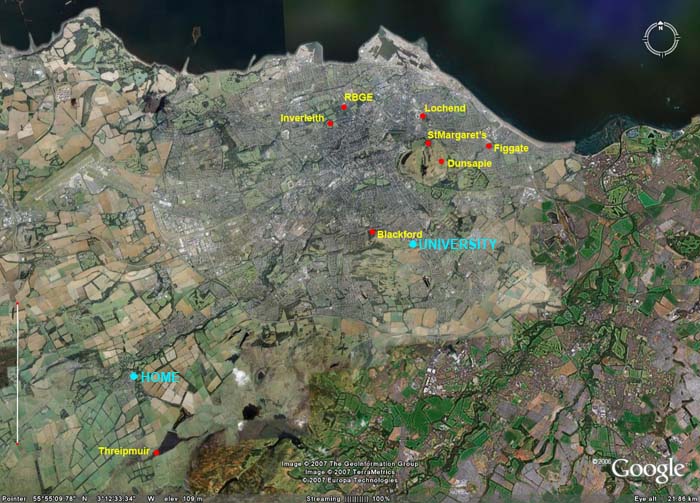Why did Sellaphora become a model system for studying diatom speciation?
Scientific projects are not always planned. Serendipity often plays a major role. It would be easy in retrospect to construct a false history, in which Sellaphora was selected as a model system because of the special features we listed. The truth is that we started studying Sellaphora because they were abundant in Blackford Pond in the early 1980s, when David Mann was working towards a reassessment of the taxonomy of raphid diatoms [later published in F.E. Round, R.M. Crawford & D.G. Mann (1990) The Diatoms. Biology and morphology of the genera. Cambridge University Press. 747 pp.]. "I needed convenient sources of living diatoms, so that I could examine the structure of the cell wall and the cell itself (especially the chloroplasts) and how the structure changed during the cell-cycle. I hoped that these extra sources of information would help me understand how different groups of diatoms are related to each other (this was before molecular genetic methods transformed the way we go about studying evolution). Threipmuir Reservoir and Blackford Pond were just the easiest places to get to on my way to work. I'd travel up to Threipmuir at about 8 in the morning, collect a bottle of muddy water (sometimes I had to break the ice with a sledge hammer), and then go on to Blackford Pond for another bottle, arriving at the University between 9 and 10 with plenty of time to process the samples before the end of the day."
The key discovery was that the act of transferring natural populations of diatoms from Threipmuir or Blackford Pond to the laboratory often induced sexual reproduction ... and that cells of Sellaphora pupula that differed slightly in their shape and cell wall patterning did not mate indiscriminately, but would copulate only with cells of similar shape and patterning. Here is one of the earliest colour pictures taken to document this phenomenon, in November 1983. The first paper on speciation in diatoms was published the next year [Mann, D.G. (1984). Observations on copulation in Navicula pupula and Amphora ovalis in relation to the nature of diatom species. Annals of Botany 54: 429-438].


 This site is hosted by the Royal Botanic
Garden Edinburgh.
This site is hosted by the Royal Botanic
Garden Edinburgh.